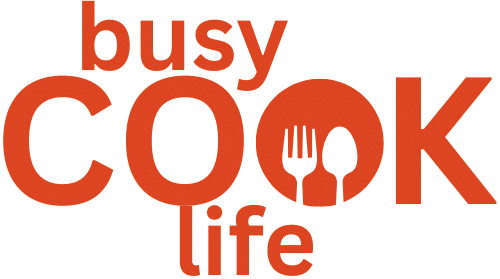Hi, I’m Emma — a 37-year-old home cook from Asheville. I cook fast. I keep recipes simple. I reach for pink himalayan salt because it makes me smile and because folks talk up pink salt health benefits like they’ll fix dinner chaos.
I’ll be real: himalayan salt comes from Pakistan’s Punjab near the foothills. A teaspoon of table salt has about 2,300 mg sodium; a teaspoon of himalayan pink salt has about 2,200 mg. Both are mostly sodium chloride with tiny minerals like calcium, potassium, magnesium, and iron.
I use it for flavor, not miracles. I finish dishes with a pinch. I sip water more. I watch blood pressure and try to keep sodium in check. I’ll share what research says, tips for using pink himalayan, and how I get big flavor with little of it — so meals stay cozy and sensible. Read more about sole water and sodium here: sole water info.
Key Takeaways
- I enjoy pink himalayan salt for flavor and looks, not as a cure-all.
- Both table and himalayan have similar sodium levels; use sparingly.
- Trace minerals exist, but they’re tiny — don’t expect big changes.
- Season at the end, taste, and pair with veggies or beans.
- Small choices add up: less sodium, more water, more whole food.
Why I Fell for Pink Salt on a Tuesday Night with a Toddler and a Tired Brain
That Tuesday, with a toddler on my hip, a cheerful pinch felt like a tiny rescue. I burned the broccoli. I grabbed eggs. I needed flavor fast.
Real moments when a quick fix sounded like a rescue
I tried himalayan salt because friends did and the color was fun. Mostly, I wanted easy taste on the plate. A small pinch on scrambled eggs made dinner feel finished.
So here’s how I do it when dinner needs flavor fast
- Keep a light hand: one teaspoon of finely ground seasoning can deliver a big sodium hit, so I season once and taste.
- Use texture: coarse crystals give crunch on toast; fine sprinkles suit soups.
- Mix with acid: lemon or vinegar wakes flavors and lets me use less.
Himalayan salt is mined in Pakistan and is minimally processed. I use sea salt or whatever’s handy. When I want the recipe I mention, try this easy pink salt recipe for a quick snack.
What Pink Himalayan Salt Really Is (and Isn’t)
The jar on my counter tells a story. The crystals began in the Khewra Salt Mine in Pakistan’s Punjab. They formed when ancient seawater dried up. That long trip is the source of the rosy color.
From Khewra mines to my Asheville kitchen
At the end of the day, himalayan salt contains mostly sodium chloride. It’s the same basic chloride compound as table salt and many sea salt types. The pink hue comes from tiny minerals like calcium, potassium, magnesium, and iron.
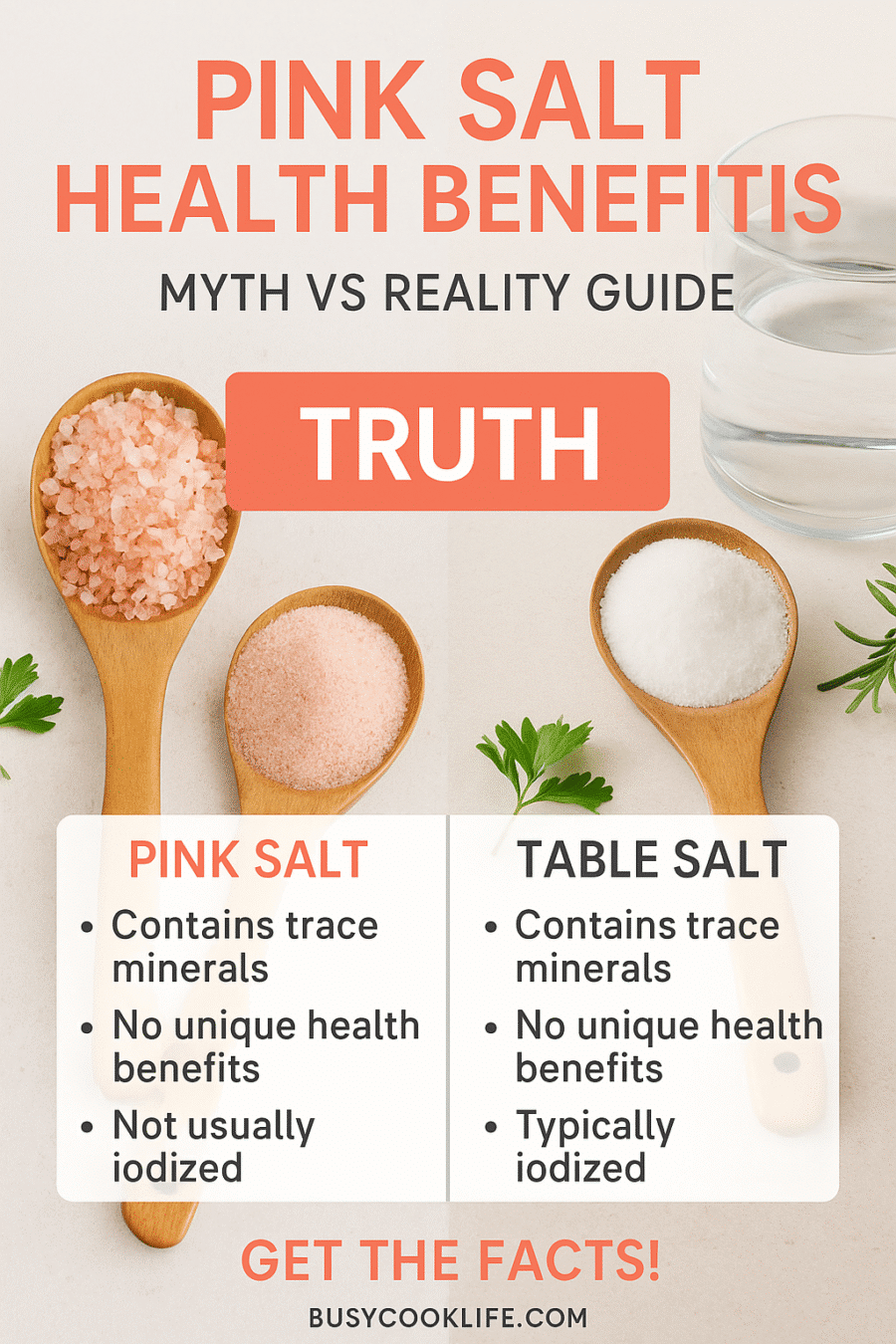
Finely ground vs. coarse — why it matters
Grind size changes how salty a teaspoon feels. Finely ground crystals pack tight and deliver about 2,300 mg sodium per teaspoon. Coarse flakes sit looser, so you may get less sodium by volume. I taste as I go to avoid a too-salty finish.
Pink vs. sea vs. table — taste and tiny trace elements
Texture is the main type difference I notice. Table salt often adds iodine and anticaking agents. Sea salt, himalayan salt, and table salt all season food — the minerals are pretty trace. For a quick read on research, see this research overview. For a simple finishing trick, try this easy recipe.
pink salt health benefits: Hype, Hope, and What Research Actually Says
Before you swap every shaker, let’s look at what research actually shows. Many claims sound convincing — improved hydration, detox, pH balance, better sleep. But studies do not show unique gains from himalayan salt over common alternatives.
Quick science snapshot:
- Sodium chloride supports normal body function, but extra trace minerals in pink himalayan salt are tiny.
- Too much sodium can raise blood volume and raise blood pressure. That ups risk for heart disease.
- Detox and pH claims sound neat, yet liver and kidneys handle that work. This seasoning may only change water retention.
I also tested a lamp glow at home. It looked cozy. The “negative ions” story for better air or fewer allergies lacks solid proof.
So here’s how I roll: I use a pinch for flavor. I cut processed snacks. I cook more at home. Small choices beat hype every time.
Minerals in Himalayan Pink Salt: Pretty Hue, Tiny Numbers
Those rosy crystals look rich, but the numbers tell a different story. I admire the color. I also check the facts. The mineral content is real — yet very small.
Calcium, potassium, magnesium, iron — how much do you really get?
Analyses show about 1.6 mg calcium per gram, ~2.8 mg potassium, ~1.06 mg magnesium, and ~0.037 mg iron. That’s a sprinkle, not a serving. A teaspoon still gives mostly sodium chloride and chloride, not a mineral boost.
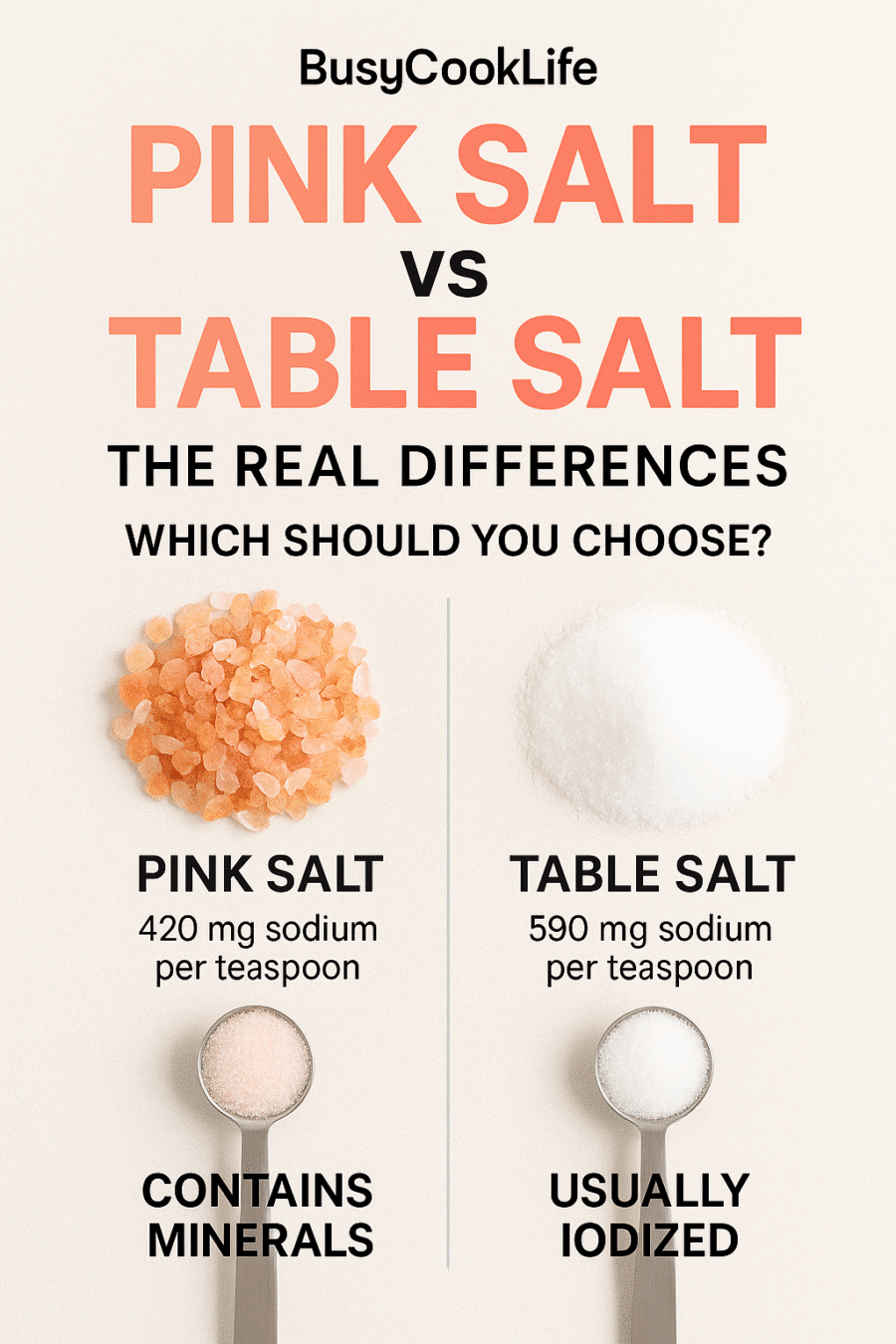
Why you’d need way too much for meaningful intake
If you chased daily potassium through this seasoning alone, you’d need pounds of it. That’s unsafe. I grab real sources instead — beans, greens, yogurt, bananas, and nuts supply minerals without the sodium risk.
- The hue comes from iron compounds — pretty, but mainly aesthetic.
- Finely ground crystals pack tighter by volume, so a teaspoon has sodium close to table salt.
- I use the pink himalayan salt for finishing and flavor. I rely on whole foods for nutrition.
For a research note, see a detailed research review. For a fun recipe that uses a light pinch, try this coffee recipe.
Smart Ways I Cook with Himalayan Salt Without Overdoing Sodium
When the clock races, a tiny pinch often saves a meal. I use himalayan salt as a finishing move, not a shaker-for-everything. That keeps flavor high and sodium lower.
Finishing vs. cooking — when crystals shine
Finish for texture: large crystals give a pop on avocado toast or roasted carrots. They melt slowly and add crunch.
Cook for base seasoning: add a light touch to stews and pasta water early, then finish bowls at the table so people adjust to taste.
Adjusting for grind size
Finely ground varieties pack more sodium per teaspoon. I measure less and taste more when it’s ground fine.
If crystals are coarse, I sprinkle for sparkle and let the bite do the work.
Simple dinners that pop
- Sheet-pan chicken: lemon, olive oil, pepper—finish with a kiss of himalayan salt before serving.
- Tomato-cucumber salad: sea salt flakes, herbs, a quick toss.
- Quick egg stir-fry: garlic, greens, and a tiny teaspoon to wake flavors.
- Yogurt with cucumbers and dill: one grain of seasoning brightens everything.
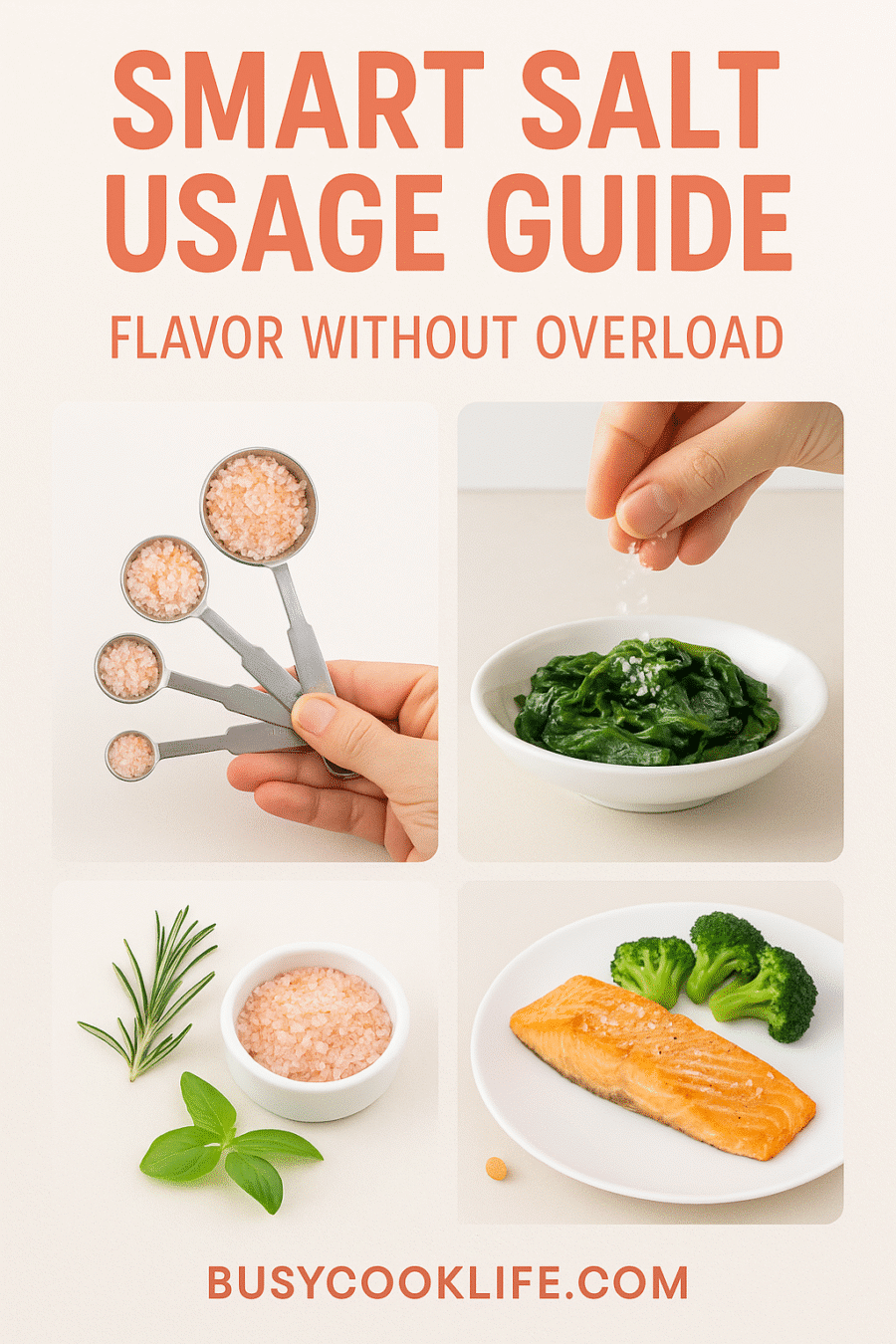
“Taste, pause, and then sprinkle. That one breath makes better food and fewer extra shakes.”
Need a five-minute save? Try my cozy mug recipes on BusyCookLife.com—the Savory Egg Mug and the 3-minute Chocolate Chip Cookie Mug Cake. Small tricks, big flavor.
| Grind | Use | Why it helps |
|---|---|---|
| Finely ground | Soups, sauces, baking | More sodium per teaspoon—measure and taste |
| Coarse crystals | Finishing, salads, toast | Crunch and slower dissolution—less perceived saltiness |
| Sea salt flakes | Delicate veggies, desserts | Light, quick melt and visual appeal |
Non-Dietary Uses I’ve Tried (Baths, Gargles) and What’s Worth It
On cold nights I soak in a quick tub ritual that feels like a mini-reset. Winter in Asheville dries my skin, so I’ve tried baths with about a cup of himalayan salt in warm water. That dose matches guidance like the National Eczema Association’s tip for soaks—table or himalayan pink salt can help some flare-ups and soothe itchy patches.
Salt soaks for angry winter skin—what the eczema guidance says
I stay in for ten minutes. It calms my redness and gives me a quiet break. After the tub I pat dry and moisturize. If your skin reacts, stop. That’s my simple mom rule.
Warm saltwater gargle: finely ground ratios that actually soothe
When my toddler brings home colds, I mix 1/4 to 1/2 teaspoon of finely ground himalayan pink in 1/2 to 1 cup of warm water and gargle. It eases a sore throat and feels immediate. Don’t swallow—just spit and repeat every few hours as needed.
Note: I owned a salt lamp; it looks cozy, but I don’t expect air-cleaning magic.
- I pick the type by what’s handy—the method matters more than the color.
- Test a patch first, moisturize after, and stop if your body protests.
- These rituals don’t replace medical care—just small, soothing moments.
| Use | Ratio | Why I do it |
|---|---|---|
| Bath soak | 1 cup himalayan salt per tub of warm water | Soothes dry skin and eases mild flare-ups; short soak then moisturize |
| Gargle | 1/4–1/2 tsp finely ground in 1/2–1 cup warm water | Quick throat relief during colds; spit and repeat |
| Spa lamp | Display only | Creates a cozy glow—no proven air quality change |
Health Limits to Respect: Blood Pressure, Iodine, and Everyday Balance
A tiny pinch might taste fine, but the math on sodium adds up fast. Excess sodium — from any seasoning — can raise blood pressure and put extra strain on the heart. That risk shows up over time: higher blood pressure links to heart disease, stroke, and kidney problems.
Why too much salt may raise blood pressure and strain the heart
Too much sodium increases fluid volume in the body and pushes pressure up. I season lightly, use herbs and acids to boost flavor, and taste before I add more. If high blood runs in your family, home cooking and fewer packaged foods make a big difference.
The iodine gap with pink Himalayan salt—and easy food fixes
Most table salt contains iodine; pink varieties usually do not. I balance that by eating iodine-rich foods like eggs, dairy, salmon, or a little seaweed now and then. For a practical read on simple routines, see this sole water detox tip.
Kidneys, bones, and stomach health: what “too much” can mean
High sodium can stress kidneys and raise calcium loss in urine — not great for bones. Some studies also link heavy intake to stomach cancer risk. Aim for about 2,300 mg sodium a day (roughly one teaspoon of finely ground table salt) and follow NHS-style limits for total daily salt.
“One small pinch at a time” — my kitchen mantra keeps flavor and pressure in check.
- I cook low-sodium, then let the table finishers help each person adjust.
- Drink water, fill plates with beans and veggies, and check labels on processed foods.
- When in doubt, talk to your doctor about your blood levels and diet plan.
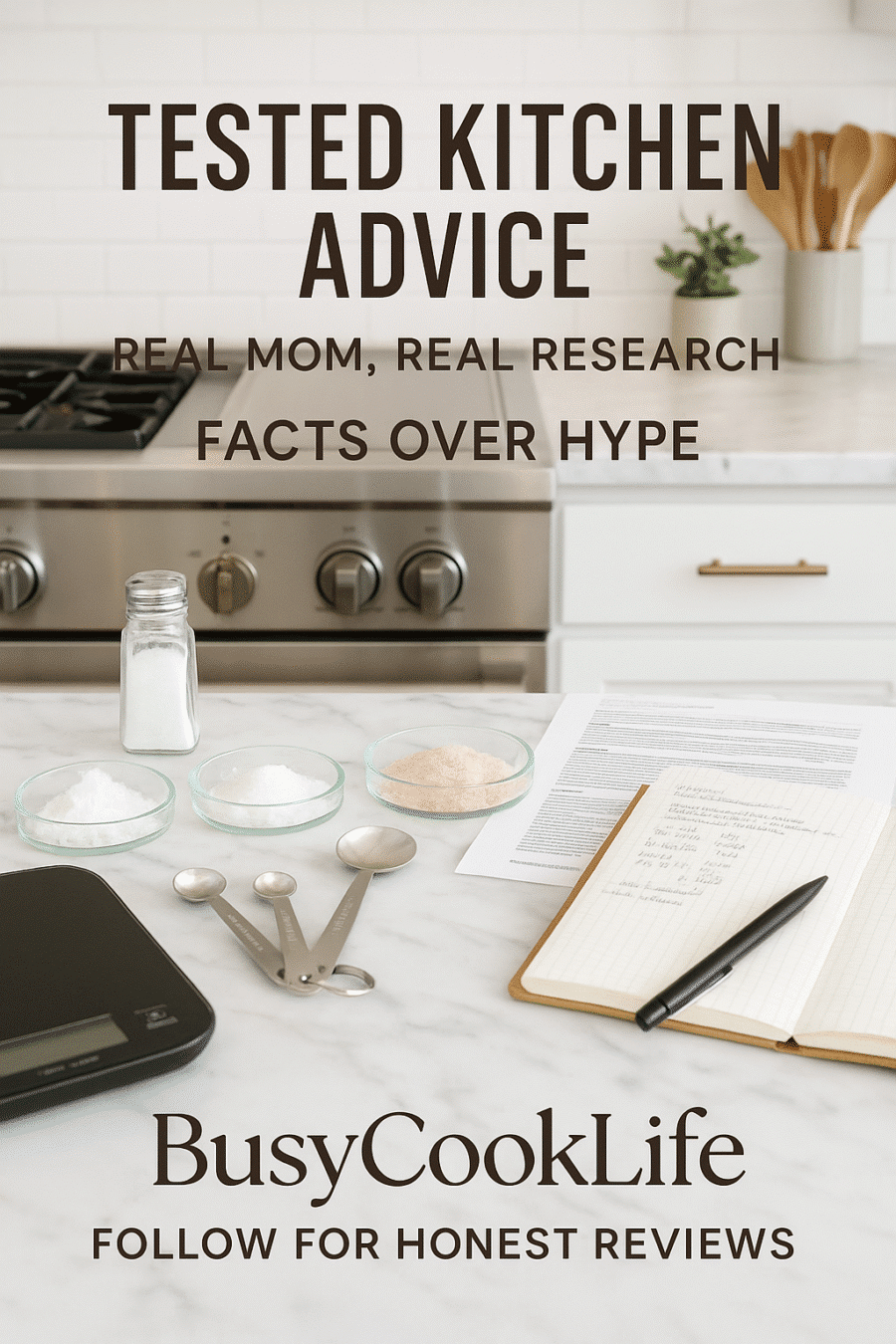
Conclusion
A tiny pinch often turns a tired dish into something I actually want to eat. I love the look and texture of himalayan salt. But I also know it’s mostly sodium chloride with only trace minerals.
Here’s where I landed: pink himalayan is tasty and pretty, yet no proven extra benefits over table salt or sea salt. I season lightly, finish at the table, and let herbs, citrus, and oil do the work. That keeps sodium levels calmer day to day.
If you skip iodized table salt, get iodine from eggs, dairy, or seafood. For a simple recipe that uses a light pinch, try this pink salt recipe.
Cook more at home, taste as you go, and enjoy the rosy crunch—without chasing hype. You’re doing great.
FAQ
What is Himalayan pink salt and how is it different from table or sea salt?
Himalayan pink salt is mined from the Khewra mines in Pakistan. It’s mostly sodium chloride like table salt, but has tiny amounts of minerals such as potassium, magnesium, calcium, and iron that give it a pale hue. Compared with iodized table salt, it usually lacks added iodine. Texture varies — finely ground works like table salt for baking and coarse crystals are great for finishing or grinders.
Can this type of salt lower blood pressure or cure health problems?
No — swapping table salt for Himalayan won’t lower high blood pressure by itself. Blood pressure is tied to overall sodium intake, not the salt’s origin. The mineral traces in this salt are too small to meaningfully affect disease or blood levels. For high blood pressure, the best moves are reducing total sodium, eating more vegetables, and following your clinician’s advice.
Does Himalayan salt contain lead or other harmful metals?
Trace elements can show up in many natural salts, but reputable brands test for contaminants and stay within safety limits. If you’re worried, pick a tested, food-grade product from a known brand or supplier and don’t consume large amounts.
Is it true this salt hydrates you better than regular salt?
Claims that it hydrates better or balances electrolytes more effectively aren’t backed by solid research. Hydration depends on total sodium, fluids, and potassium intake. Using a pinch to flavor food is fine — but it won’t replace medical hydration strategies or sports drinks when you need them.
Can I use it for baths or gargles? Does that help skin or sore throats?
I use a few tablespoons in a warm bath for soothing winter-dry skin — it helps me, but it’s not a medical cure. For a sore throat, a warm saline gargle made with finely ground salt and clean water can ease discomfort. Keep concentrations mild and check with your clinician for persistent issues.
How much should I use daily — is there an ideal teaspoon amount?
Health groups recommend keeping sodium low — often under 2,300 mg per day for most adults (about a teaspoon of sodium chloride total from all sources). That’s total sodium from food, not just the salt shaker. I aim to season lightly and use herbs, acid (like lemon), and spices to boost flavor without adding extra sodium.
Does Himalayan salt provide meaningful minerals like iron, magnesium, or calcium?
It contains tiny amounts, but you’d have to eat unrealistic quantities to meet nutrient needs from it alone. Get minerals from balanced foods — leafy greens for magnesium, dairy or fortified foods for calcium, and lean meats or beans for iron.
Should families with kids or people with kidney disease avoid it?
People with kidney disease, hypertension, or heart conditions should limit total sodium and follow their doctor’s plan. Kids need moderated sodium too. This type of salt isn’t a safer “free pass” — it still contributes sodium that affects blood pressure and fluid balance.
Is this salt iodized? Do I need to watch iodine intake if I switch?
Most Himalayan-style salts are not iodized. If you stop using iodized table salt, make sure you get iodine from other foods like dairy, seafood, eggs, or fortified products to avoid a deficiency. Talk to a clinician if you have thyroid concerns.
How do I use it in cooking without over-salting food?
Adjust by grind: finely ground measures more densely, coarse crystals less so. Start with less, taste as you go, and finish with a light sprinkle for texture and snap. I also use citrus, herbs, garlic, and a touch of fat to make food feel flavorful with less sodium.
Are Himalayan salt lamps or inhalers useful for health?
Evidence for lamps releasing beneficial “negative ions” or improving respiratory health is weak. They’re nice mood-setting decor, but don’t replace proven treatments for allergies, asthma, or other conditions.
Can using this salt help with pH balance, detox, or sleep?
Claims about detoxing or changing body pH are unsupported. Some people say a warm bath with the salt relaxes them and helps sleep — that could be from the warm water and routine, not a chemical detox. Keep expectations realistic and use it as an occasional self-care ritual if you like.
